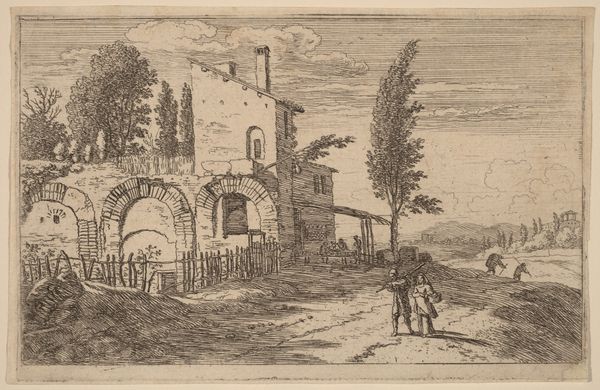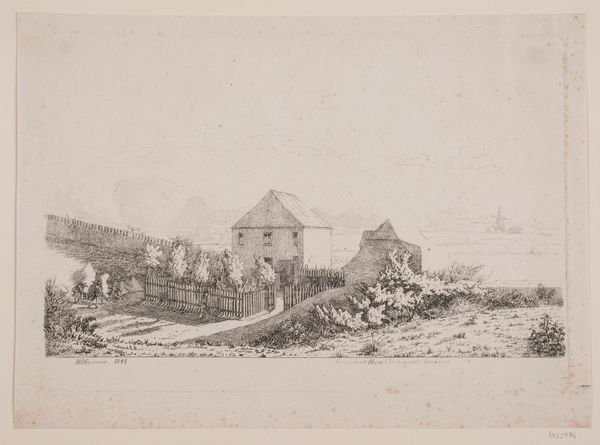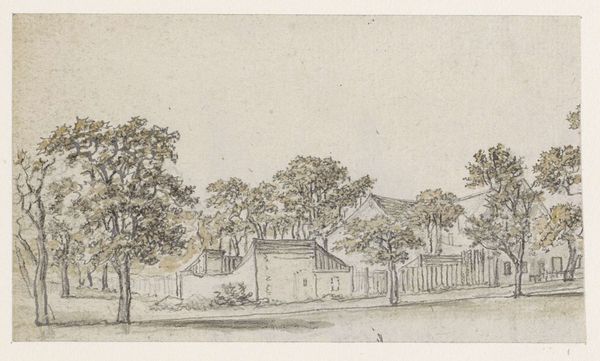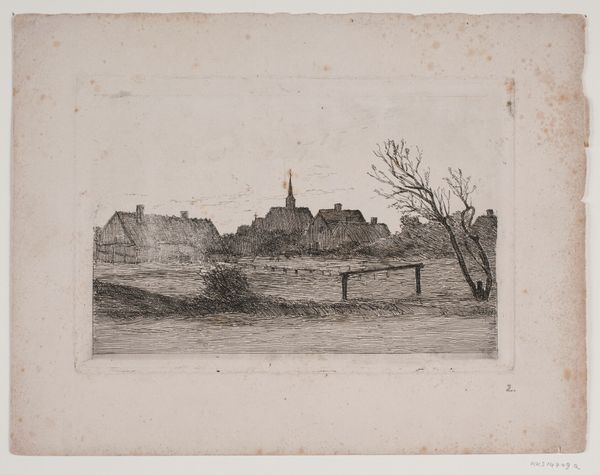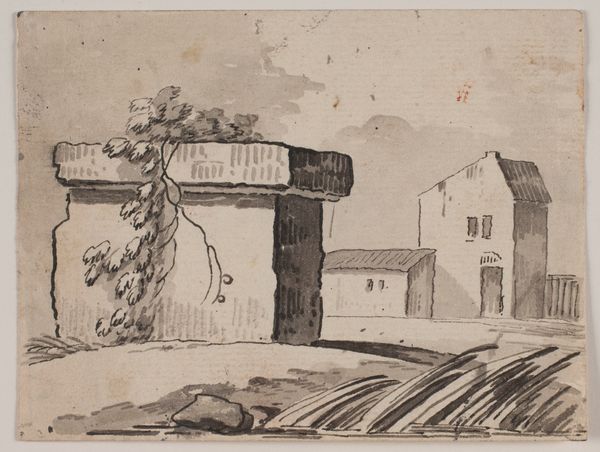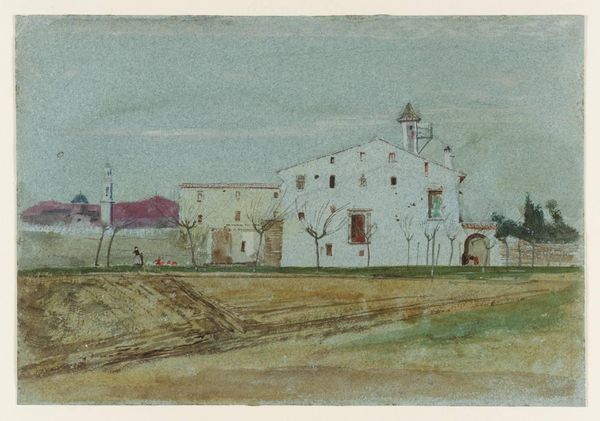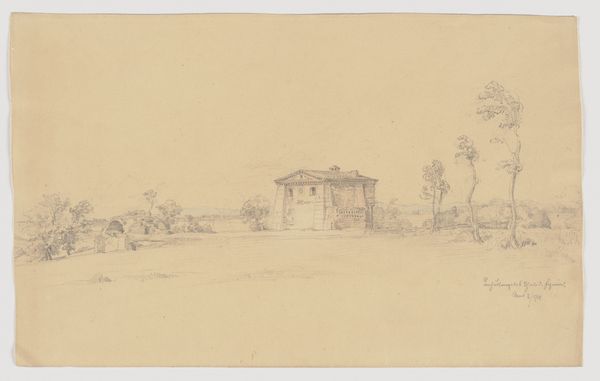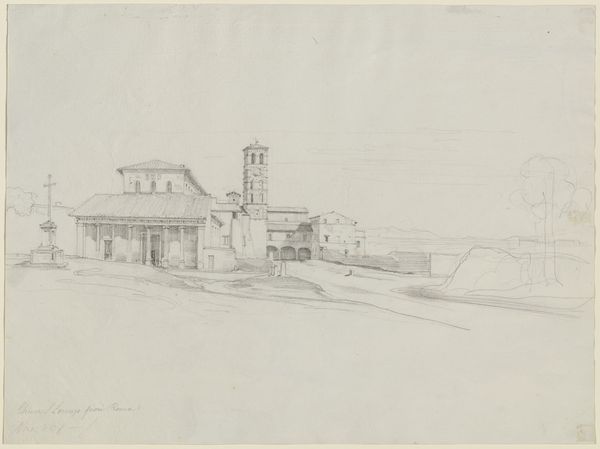
View of the Church of San Pancrazio, Rome, from the South 1834
0:00
0:00
drawing, print, watercolor, pencil
#
drawing
# print
#
landscape
#
watercolor
#
romanticism
#
pencil
#
cityscape
#
watercolour illustration
#
genre-painting
#
watercolor
Dimensions: Sheet: 5 3/8 × 7 5/8 in. (13.7 × 19.3 cm)
Copyright: Public Domain
Curator: Let’s turn our attention to Franz Ludwig Catel’s “View of the Church of San Pancrazio, Rome, from the South,” a watercolor, pencil, and print work dating to 1834, currently held at The Met. Editor: Immediately, I’m struck by the atmospheric haziness. It gives the whole composition a very dreamlike quality. The muted palette and simplified forms feel very Romantic in the artistic sense, of course. Curator: Absolutely. Catel's strategic use of watercolor amplifies the inherent Romantic sentimentality of the crumbling cityscape. Consider how ruins often act as symbols of time, memory, and the transience of human endeavors within that artistic and intellectual context. Editor: Yes, the ruin motif is quite effective here, and subtly so. It adds layers. It suggests not just decline but perhaps also a re-emergence or evolution of Roman identity, which is mirrored, structurally, in the contrast between foreground hill and background structures. Curator: Precisely. The painting doesn't just depict a church, it represents the endurance of the Catholic Church itself through centuries of societal flux. And you cannot look away from the church! What emotional touchstones resonate for a viewer who might feel similarly burdened or uplifted by legacy? Editor: Aesthetically, I can see the success in the formal arrangement of elements too: The balance of the prominent tree on the right mirroring the ruins on the left. It leads the eye rhythmically across the composition. Catel cleverly utilizes a simple green knoll to unify the layout, creating visual and conceptual balance between decay and faith, nature, and humanity. Curator: This Romantic tension plays directly into cultural anxieties about the perceived erosion of traditional European power structures at the time. Catel asks his audience: "How can we, too, rebuild our personal ruins?". The Church and ruins have a power as emotional lodestones that draw feelings of safety, faith, hope, resilience in response to life’s travails. Editor: It's all masterfully coded for emotional engagement, a fine example of Romantic landscape meeting shrewd pictorial organisation. The gentle slope provides depth while contrasting vertical accents to reinforce the picture's inherent tensions. A lot is being conveyed economically through this watercolour. Curator: Indeed, and as such it offers valuable insights into not only 19th-century Rome but into universal experiences with belief systems as much as belief itself. Editor: Thank you; I appreciated that view of this fine "View".
Comments
No comments
Be the first to comment and join the conversation on the ultimate creative platform.

